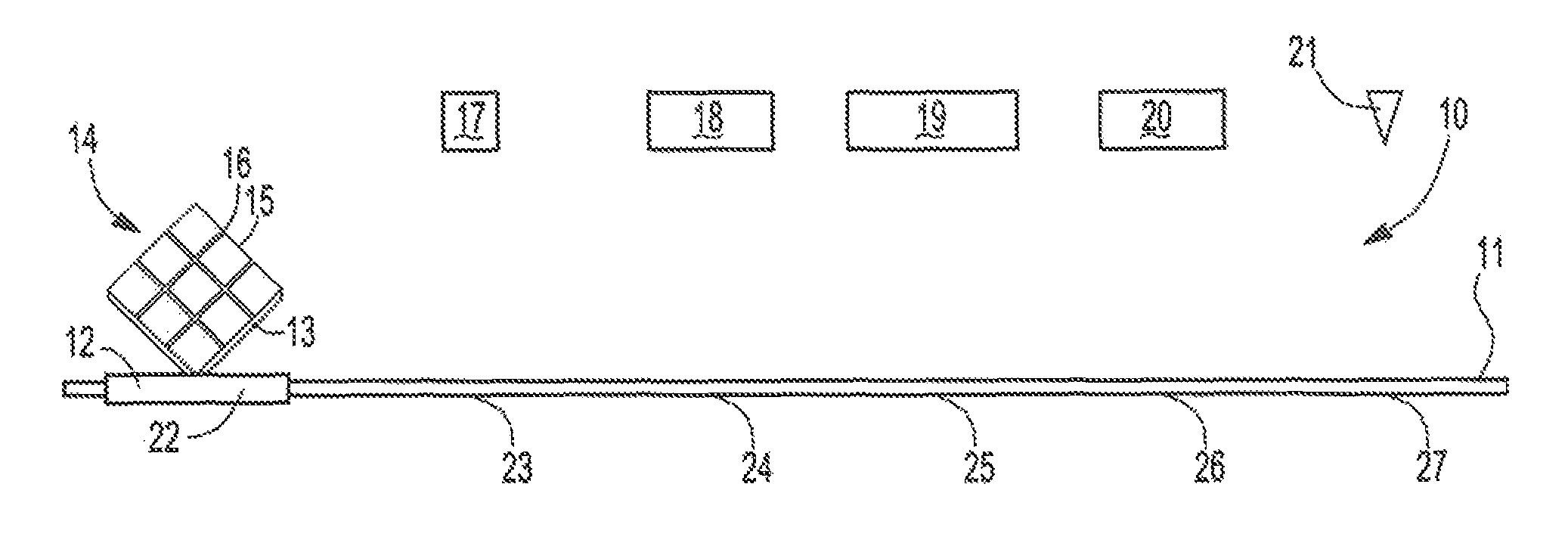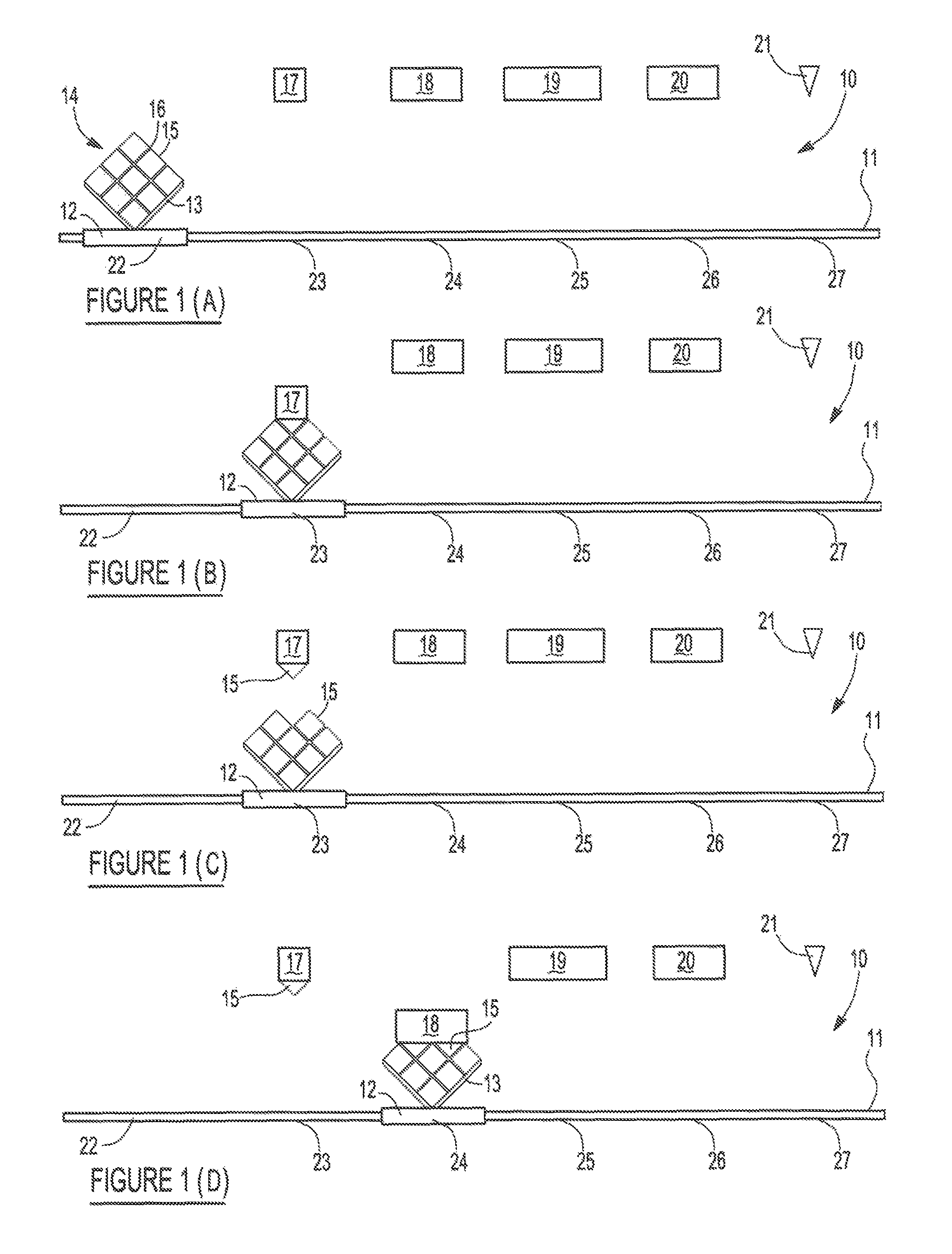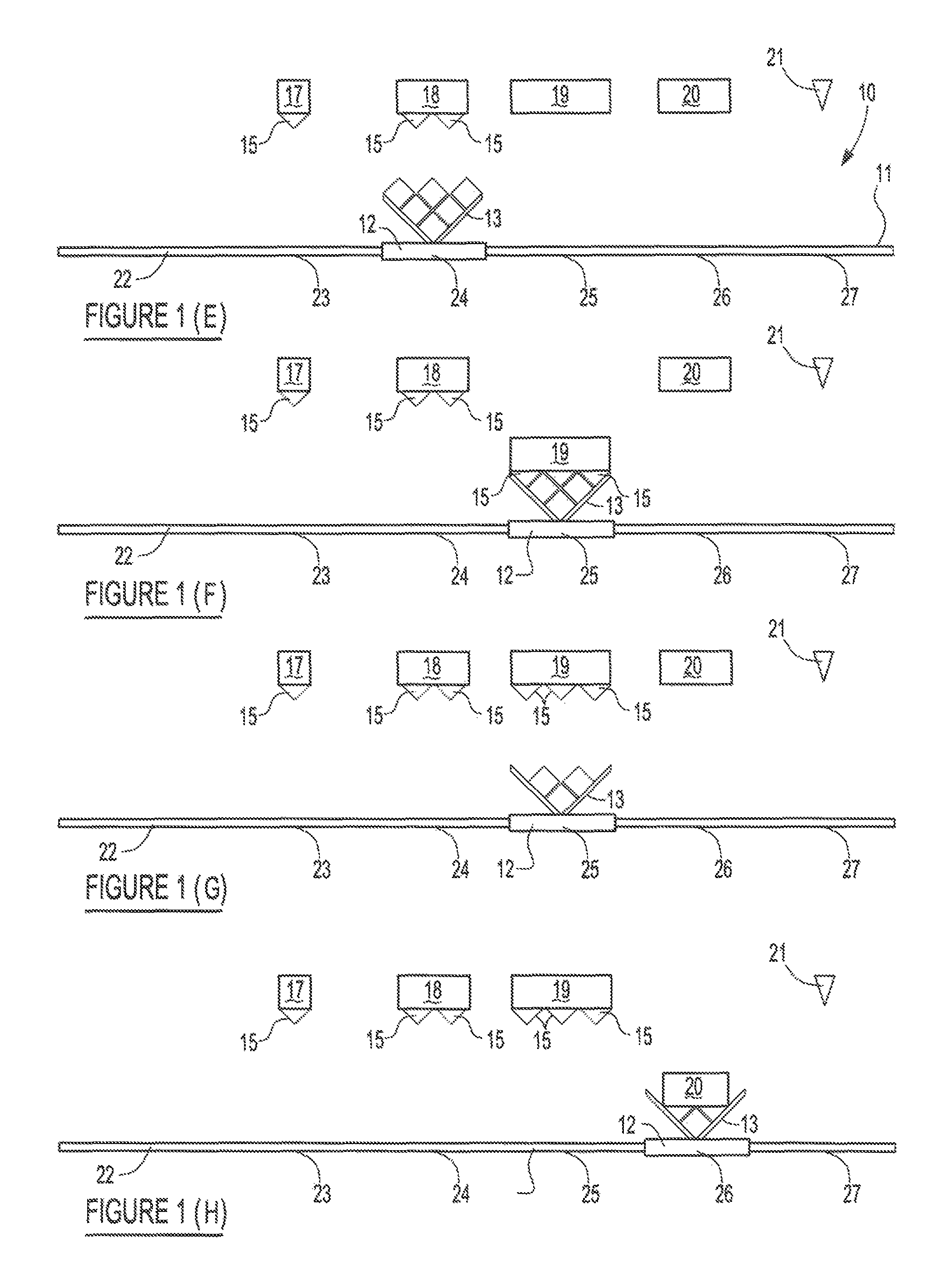Process for bonding arrays of ceramic filters
a technology of ceramic filters and arrays, which is applied in the direction of ceramicware, separation processes, machines/engines, etc., can solve the problems of filter cracking, and inadequate adhesion and mechanical failure of honeycombs
- Summary
- Abstract
- Description
- Claims
- Application Information
AI Technical Summary
Benefits of technology
Problems solved by technology
Method used
Image
Examples
Embodiment Construction
[0010]The disclosures of all articles and references, including patent applications and publications, are incorporated by reference for all purposes. The following claims are hereby incorporated by reference into this written description. This application claims priority from U.S. Provisional Ser. No. 61 / 665,362 filed Jun. 28, 2012, incorporated herein by reference in its entirety. One or more as used herein means that at least one, or more than one, of the recited components may be used as disclosed.
[0011]The invention relates to a method of assembling a plurality of ceramic filter segments into an array of ceramic filter segments which are bonded together using a cement of consistent thickness. Consistent thickness means that the cement layers disposed between two adjacent ceramic segments exhibit a thickness within a specified range and the variation of the thickness along the bonded adjacent surfaces is within a specified range of variation of the thickness. The size of the cera...
PUM
| Property | Measurement | Unit |
|---|---|---|
| thickness | aaaaa | aaaaa |
| thickness | aaaaa | aaaaa |
| thickness | aaaaa | aaaaa |
Abstract
Description
Claims
Application Information
 Login to View More
Login to View More - R&D
- Intellectual Property
- Life Sciences
- Materials
- Tech Scout
- Unparalleled Data Quality
- Higher Quality Content
- 60% Fewer Hallucinations
Browse by: Latest US Patents, China's latest patents, Technical Efficacy Thesaurus, Application Domain, Technology Topic, Popular Technical Reports.
© 2025 PatSnap. All rights reserved.Legal|Privacy policy|Modern Slavery Act Transparency Statement|Sitemap|About US| Contact US: help@patsnap.com



